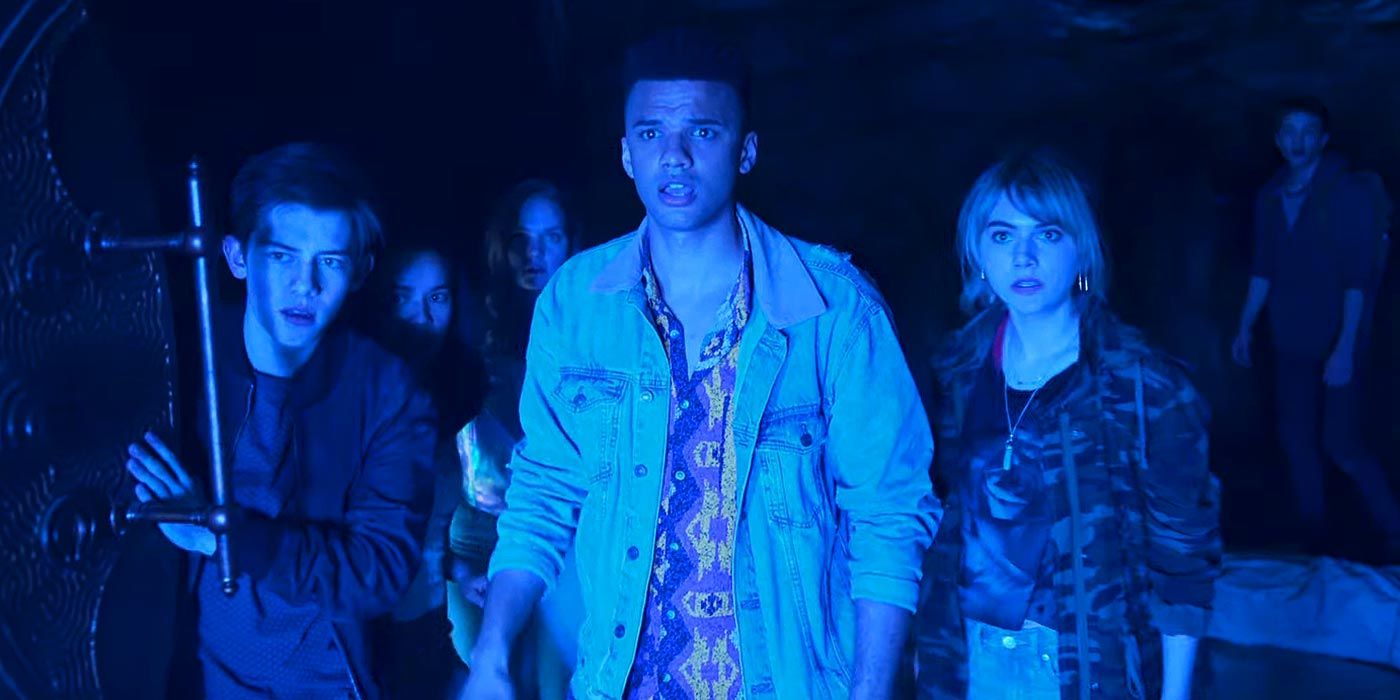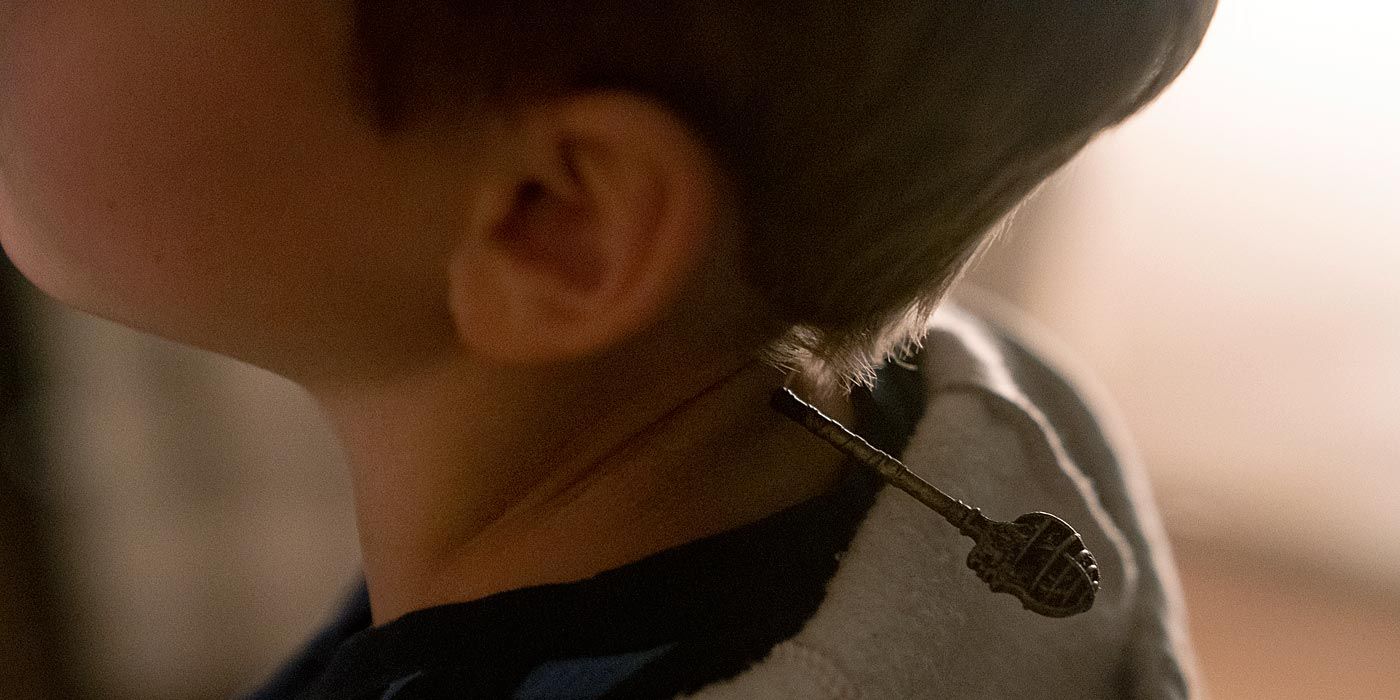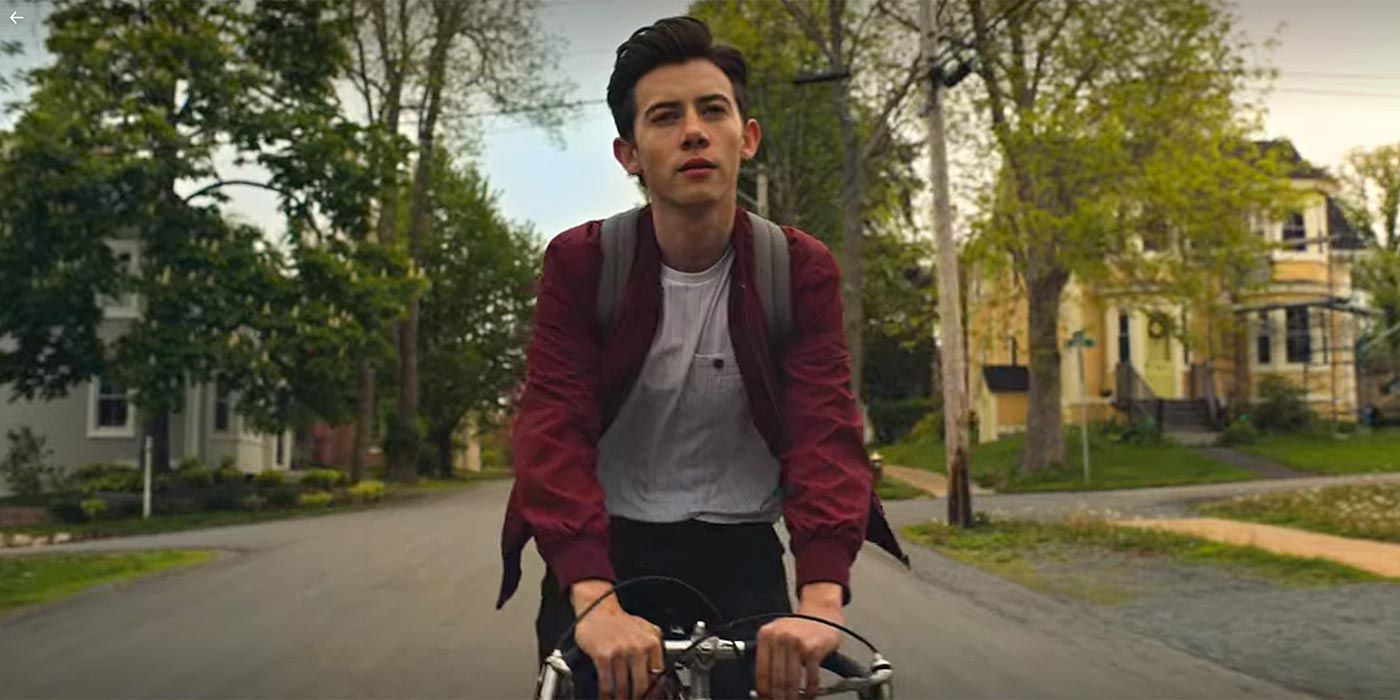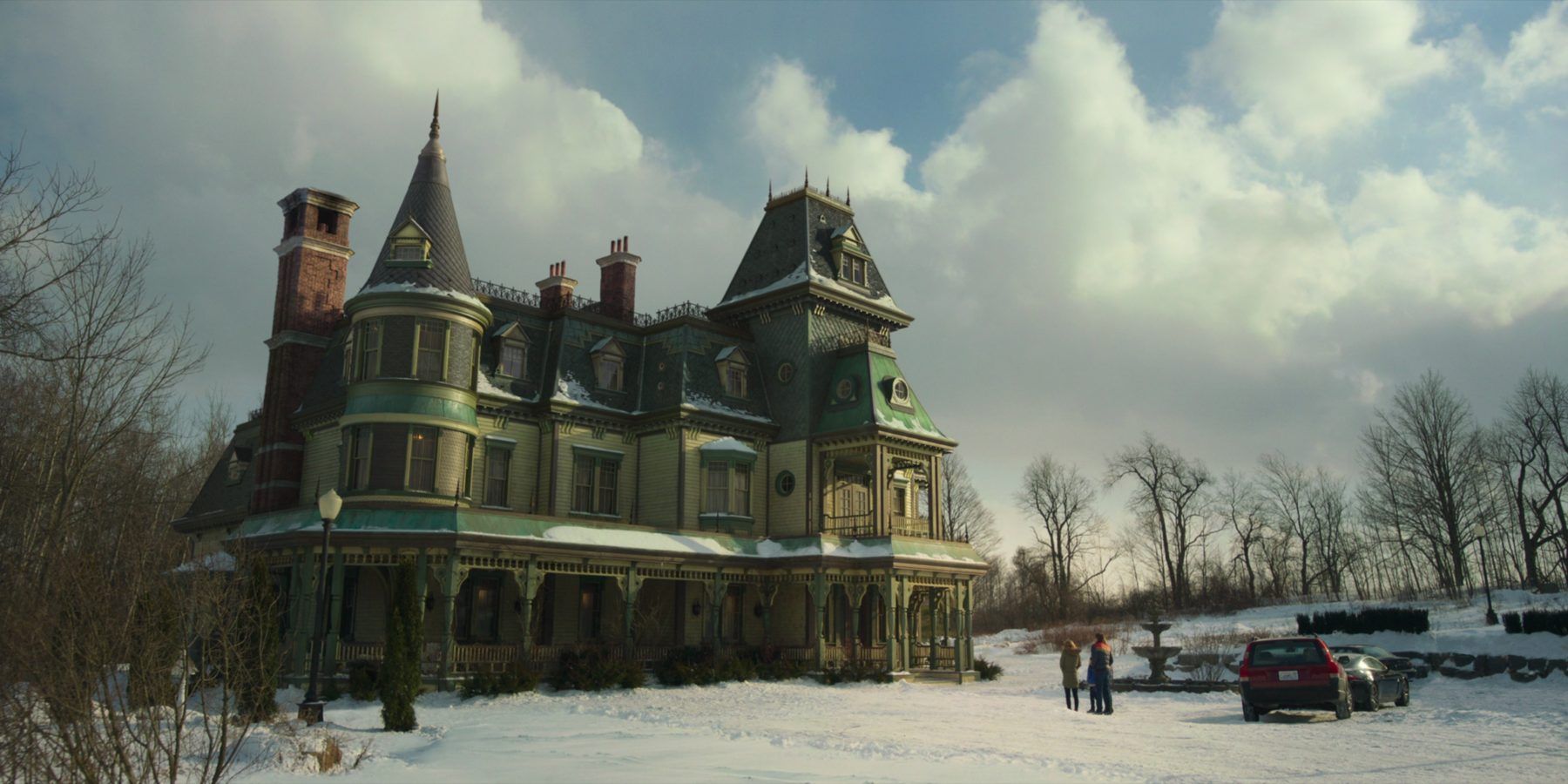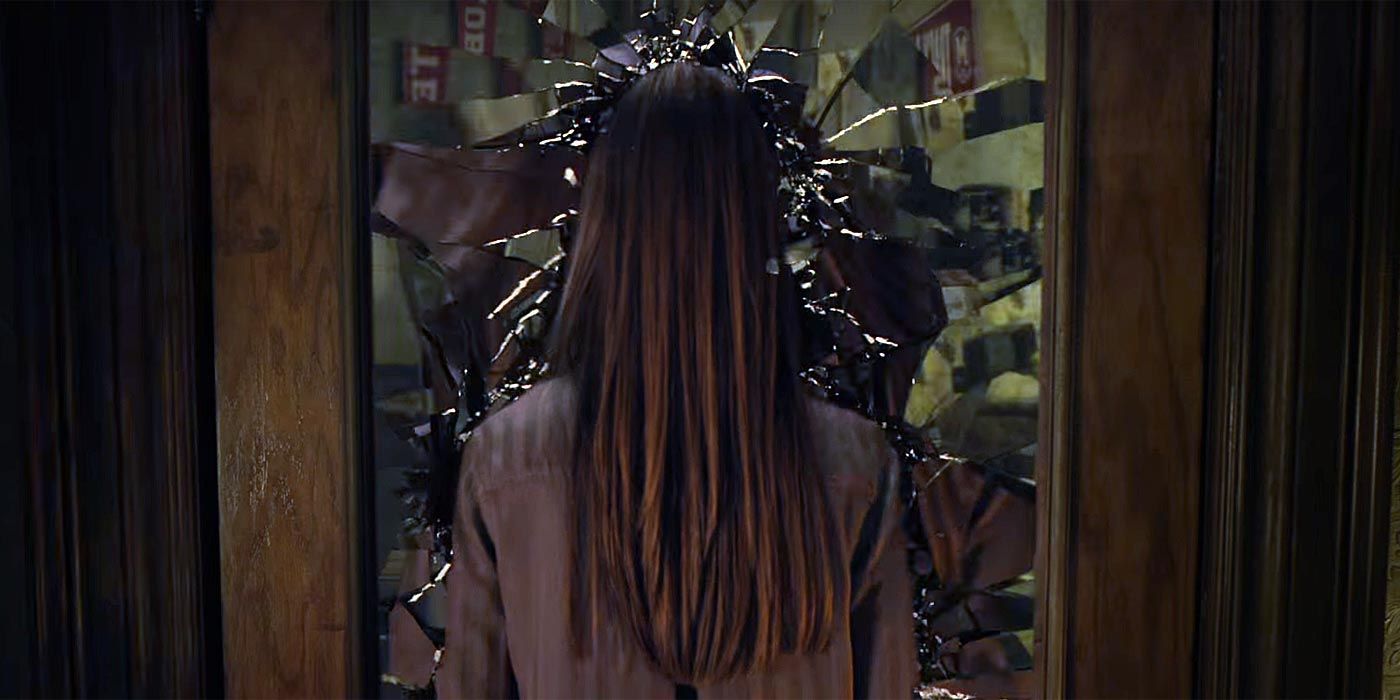WARNING: The following article contains major spoilers for Locke & Key Season 1, streaming now on Netflix.
Like any good adaptation, Netflix's Locke & Key knows exactly how to take hints from its source material while also coming up with ideas of its own. That said, there's no small amount of differences between the series' first season and the original comics. Some changes are fun and help the story move in new, interesting ways, while others may seem somewhat jarring, especially if you're a fan of the books.
Based on the acclaimed IDW comics from author Joe Hill and artist Gabriel Rodriguez, Locke & Key follows the Locke siblings Tyler, Bode and Kinsey as they, along with their mother Nina, move into their ancestral home in the town of Matheson, Massachusetts, months after the murder of their father Rendell. From there, the children are quickly thrust into a battle with a dark power for possession of Keyhouse's many magical keys.
The Keys
A big part of Locke & Key is the titular keys. In some regards, Season 1 hardly scratches the surface of just how many keys there are. And, at the same time, it introduces a large handful in a short period (practically one new key per episode). Appearing from the books are, of course, the Anywhere, Head and Shadow Keys. But the Netflix series even introduces a few new ones to boot.
The Mirror Key, when put in a mirror, allows the user to walk through said mirror and enter a sort of mirror plane, almost like what Rey finds in The Last Jedi. The Matchstick Key lights things ablaze -- pretty straightforward. The Flower/Memory Key (this one isn't ever really named in the show) unlocks a tree near the Keyhouse cemetery, which then reveals the hiding place of Duncan Locke's removed memories. The Gender and Skin Keys from the books are merged into one key, the Identity Key, in the series, which allows whoever uses it to change their appearance.
Varied Character Roles
The Locke & Key comics have a rather extensive cast of characters, but thanks to Hill's superb writing and Rodriguez's unique depictions of each character, it's tough to ever really get confused as to who's who. That said, Netflix's adaptation goes through some pretty extensive lengths to change up just about everyone in one way or another, aside from Tyler, Kinsey and Bode.
Right off the bat, you've got several brand new characters, including the mean-spirited Eden, visual effects nerds Zadie and Doug, and, of course, Gabe, who during the finale is revealed to actually be Dodge. Some character relationships are also switched around. Rather than becoming Kinsey's first friend in town, the character Jackie winds up being Tyler's romantic interest, replacing Jordan from the comics.
Gabe = Zack Wells = Lucas
While we're on the topic of newcomers, let's talk about Gabe. Fans of the comics will likely know the answers to many of the show's question the moment they arise. One way the show manages to keep the mystery alive is with the introduction of Gabe, played by Griffin Gluck. On the surface, Gabe is a totally new character. But really, he's just a different name and face for Dodge/Lucas' alter ego from the comics: Zack Wells.
In the comics, when Dodge gets out of the well house, he spends a lot of time out and about in his original form as Lucas, but under the alias Zack Wells. He doesn't change his appearance at all, taking advantage of the fact no one knows his face. English teacher Joe Ridgeway recognizes him, but it's obvious where that gets him. This was definitely one of the smarter changes made for the sake of the story, since fans of the books would know way too early on who Lucas was if he came onto the scene as Zack Wells. Having him take on the moniker of Gabe adds to the suspense to the story's future, and it turned out to be a fantastic twist at the season's finale.
Location, Location, Location
These changes are pretty minor, but they're worth noting nonetheless. As the original comic has plenty of footing in Lovecraftian-style literature, the town in Massachusetts was originally named Lovecraft. Obviously, it's been changed to Matheson here in the show. It's still a fictional town, just with a different name. Maybe Lovecraft was a little too on the nose for the show writers.
The other big location-related change comes in where the Lockes move from. In the comics, they move to Massachusetts all the way from California. In the show, they hail from Seattle, Washington. Again, it's not entirely clear why this change was made; perhaps to further exaggerate just how far Rendell wanted to get away from Keyhouse, given his dark past there.
Pacing and Thematic Handling
Locke & Key Season 1 covers a lot of ground in its 10 episodes. The whole season basically touches on material from volumes one to four from the comics, which is a lot. It feels like the very first episode zips right through the entire first volume of the comics. But really, the show does a decent job stretching out and interweaving material from across the overall comic storyline, almost telling a completely new story. It may feel dislodging at times for the more devout fans of the books, seeing the story pivot around the source material so much, but it ultimately pays off.
What doesn't entirely work as well is how the show tackles its various themes. Locke & Key took a lot of risks, but the show doesn't make nearly the same effort, and it suffers because of it. For example, Nina's entire arc of battling her alcoholism is pretty much tossed out here. Rather, she's been sober for six years, relapses for an episode, then gets over it almost just as quickly. Seeing her make this somewhat speedy recovery isn't nearly as satisfying as watching her work hard to overcome herself throughout a majority of the comics.
Streaming now on Netflix, Locke & Key Season 1 stars Darby Stanchfield (Scandal) as Nina Locke, Jackson Robert Scott (IT) as Bode Locke, Connor Jessup (American Crime) as Tyler Locke, Emilia Jones (Horrible Histories) as Kinsey Locke, Bill Heck (The Ballad of Buster Scruggs) as Rendell Locke, Laysla De Oliveira as Dodge, Thomas Mitchell Barnet as Sam Lesser, Griffin Gluck (American Vandal) as Gabe, and Coby Bird as Rufus Whedon.

